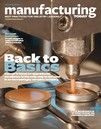Manufacturers: Statistics
According to The Federal Reserve Board’s The Beige Book, manufacturing activity continued to decline in most Districts and across a wide range of industries. Specifically, the U.S. Census Bureau indicates that new orders for manufactured goods in March, down seven of the last eight months, decreased $3.2 billion, or 0.9 percent, to $345.3 billion. Excluding transportation, new orders also decreased 0.9 percent. Shipments, down eight consecutive months, decreased $4.5 billion, or 1.2 percent, to $360.0 billion. This was the longest streak of consecutive monthly decreases since the series was first published on a NAICS basis in 1992, and followed a 0.5 percent February decrease. Unfilled orders, down six consecutive months, decreased $11.9 billion, or 1.5 percent, to $759.0 billion. This was the longest streak of consecutive monthly decreases since November 2001 to July 2002. This followed a 1.7 percent February decrease. The unfilled orders-to-shipments ratio was 5.96, down from 5.98 in February. Inventories, down seven consecutive months, decreased $4.1 billion, or 0.8 percent, to $524.8 billion. This also was the longest streak of consecutive monthly decreases since March 2003 to January 2004 and followed a 1.3 percent February decrease. The inventories-to-shipments ratio was 1.46, up from 1.45 in February.
However, several reports indicated that the pace of decline had slowed or that factory activity had stabilized. The Boston, Philadelphia, Richmond, Atlanta, St. Louis, Minneapolis and San Francisco Districts cited decreases in production. The Chicago and Kansas City Districts said declines in production had slowed. The Cleveland District noted some leveling off in declines in new orders, and the New York and Dallas Districts noted that demand was beginning to bottom out following significant declines. Orders and shipments of capital goods, autos, paper and construction-related equipment and products such as metals, wood products, lumber and electrical machinery remained mostly sluggish and below year-ago levels, with the Chicago District noting an increase in order cancellations and deferral requests. Aircraft makers in the Chicago District noted declines in demand, while aerospace manufacturers in the San Francisco District reported that a drop in airline passenger traffic and cargo capacity had spurred order cancellations and delivery deferrals.
Though, The Beige Book also indicates that orders and sales of high-tech equipment firmed somewhat at very weak levels in the Dallas and San Francisco Districts. Defense firms in the Boston and Cleveland Districts reported solid activity. Food manufacturers saw sales gains in the Philadelphia and San Francisco Districts, and a food manufacturer in the St. Louis District noted plans to open a new plant. Pharmaceutical firms in the Boston and Chicago Districts continued to see solid demand, while petrochemical producers in the Dallas District noted a slight turnaround in operating rates.
According to The Beige Book, manufacturers’ assessments of future activity improved marginally over the survey period as well, with contacts in the Boston, New York, Philadelphia, Atlanta and Kansas City Districts noting a slight upturn in the outlook for production and sales. Capital expenditure plans remained on hold across most regions, and the Boston, Philadelphia and Cleveland Districts noted cuts in capital budgets.








